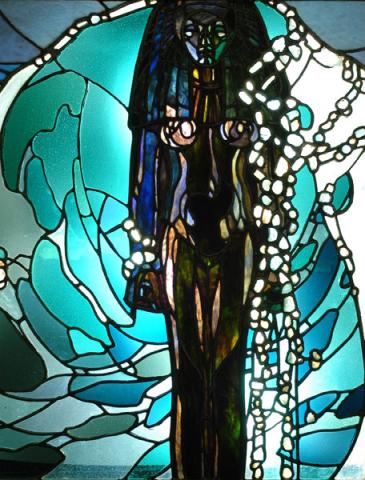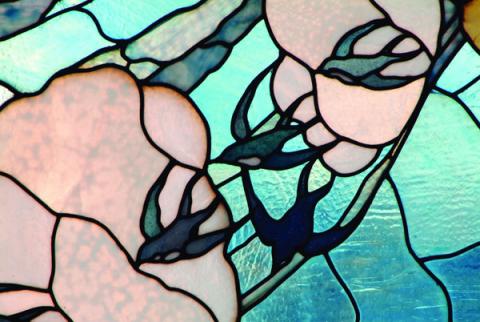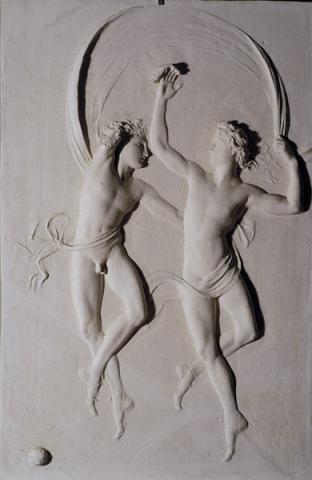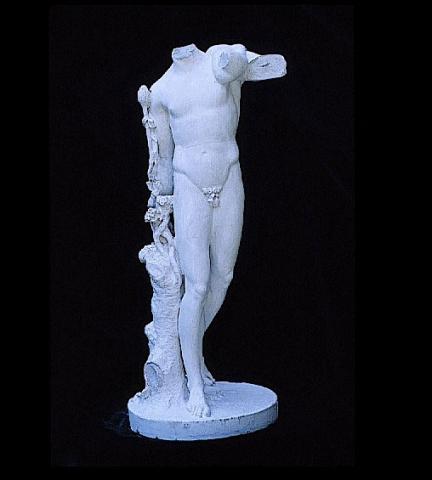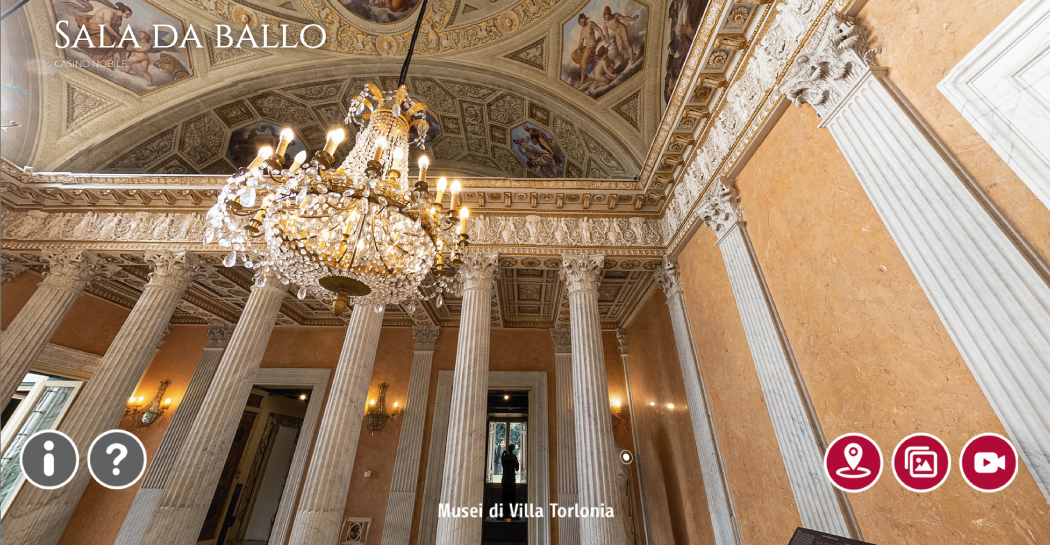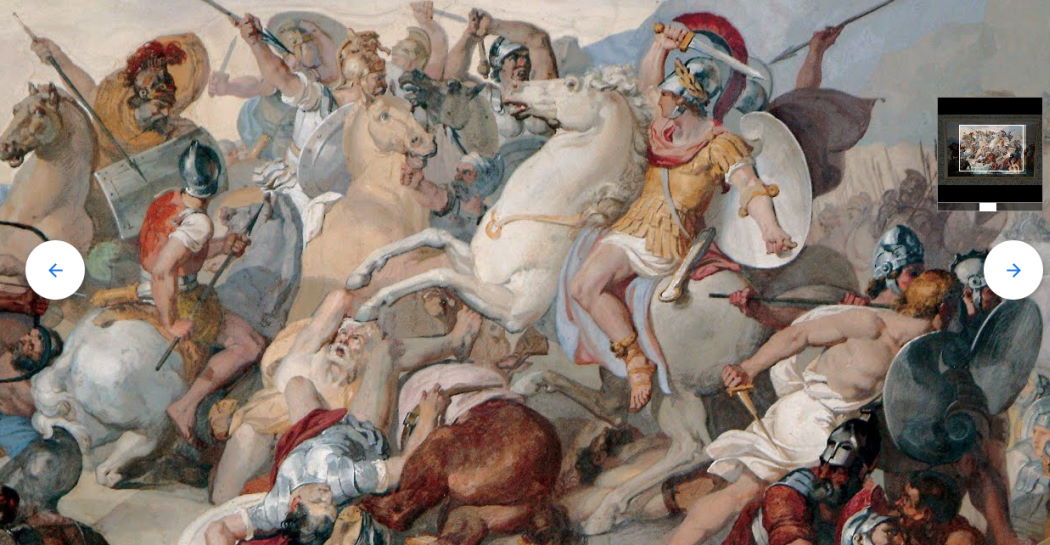The Prince’s Bedroom
The Prince’s bedroom has retained almost none of the original furnishings that once made it one of the places most intimately expressive of Giovanni Torlonia’s dark and misanthropic character. It was originally full of the symbolism of owls and night birds in general, including the large tondo in the centre of the ceiling, which depicts bats flying with their dark wings outstretched and has, fortunately, survived.
However other furnishings have been lost: once, the room contained a bed with bed-knobs in the form of owls, table lamps in the form of owls, a water jug also in the form of an owl, and the owl-pattern wallpaper, of which only a few scraps remain.
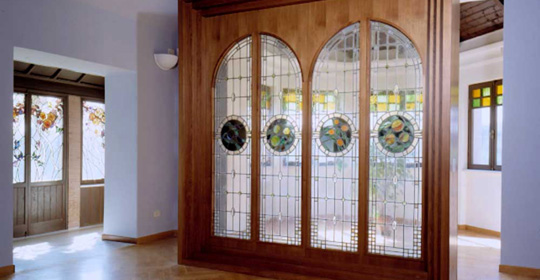
The bow window, opening onto the park, had wooden drawers all around it, with a small desk in the centre to create an intimate corner reserved for study.
A stained glass piece by Cambellotti called “The Owls at Night” once stood in an alcove in one of the walls (the alcove can still be identified, although it is now closed over). It has since been lost, but is known thanks to a sketch and a trial piece, both of which are on display in the Room of the Owls.
On the walls are hung four cartoons by Cambellotti from a series of “Migratory Birds”, which were the basis for the stained glass made by Cesare Pichhiarini for the skylight of the nearby staircase of the Four Seasons.
In the centre of the room stands a panel of four pieces of geometric glass decorated with fruit. These follow a design by Umberto Bottazzi and come from the antiquarian market.
The room also contains a number of pieces of furniture, those that have survived of the many that used to crowd the house. There is a dressing table delicately carved with ivy leaves, that surmounted by two goat’s heads, since lost, a desk with a leather writing surface and precious inlays and the headboard for a bed, of which the original disposition is unknown.
Also exhibited here is “The Idol” by Vittorio Grassi, a splendid and original piece of glass work made in 1918 and acquired by the Municipality of Rome in 2002.


























